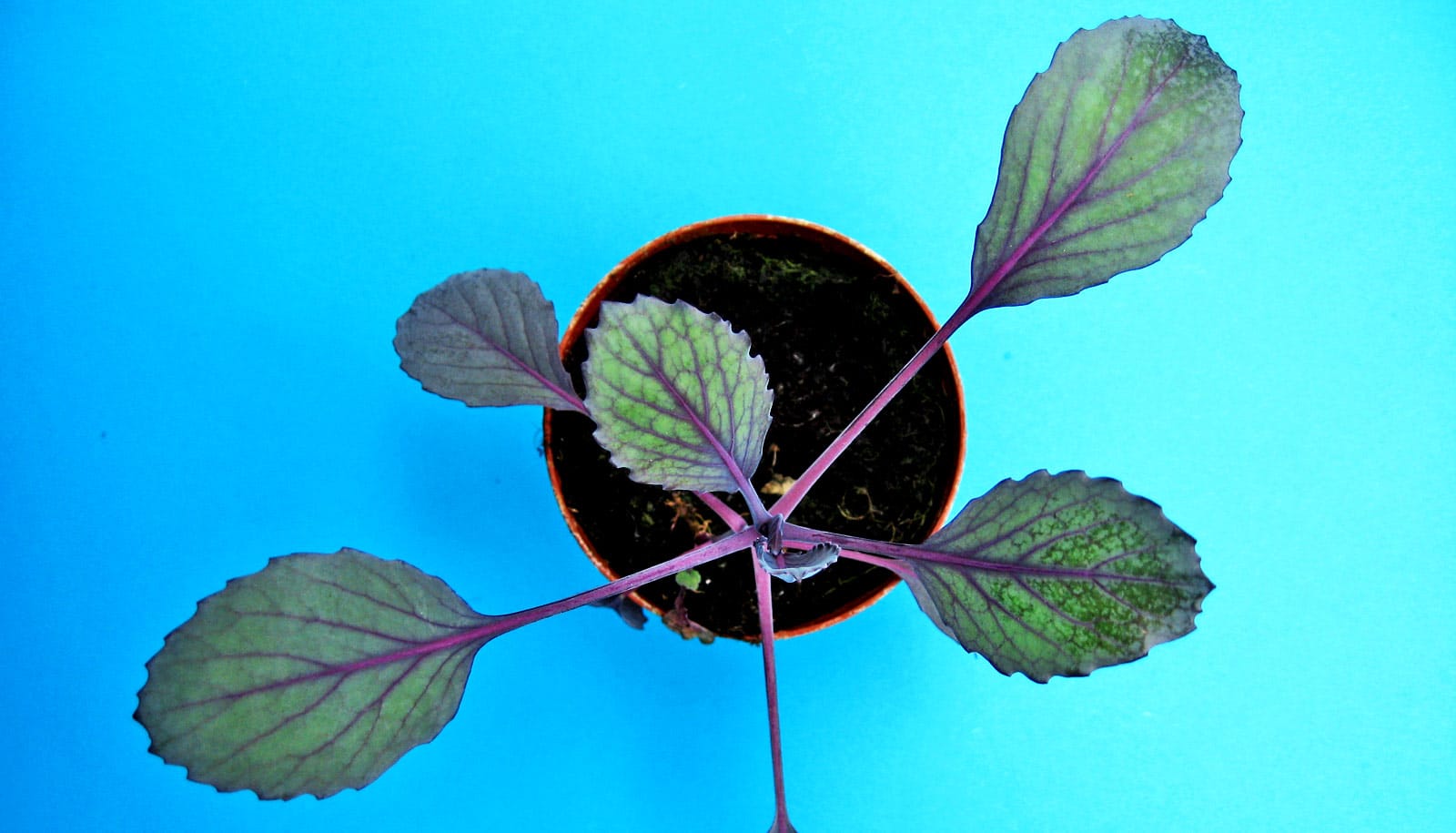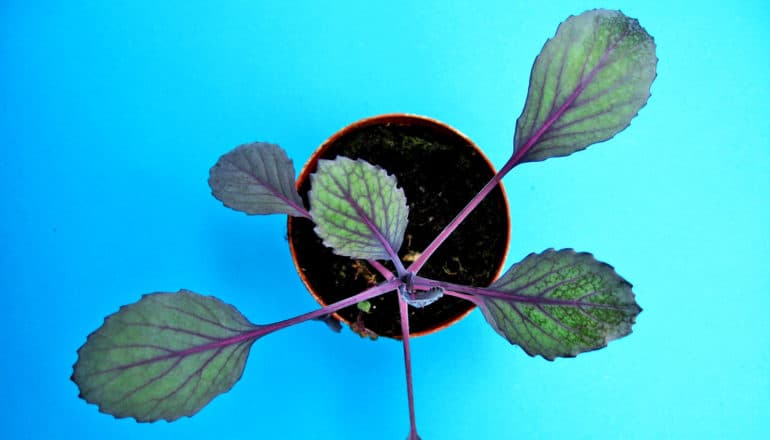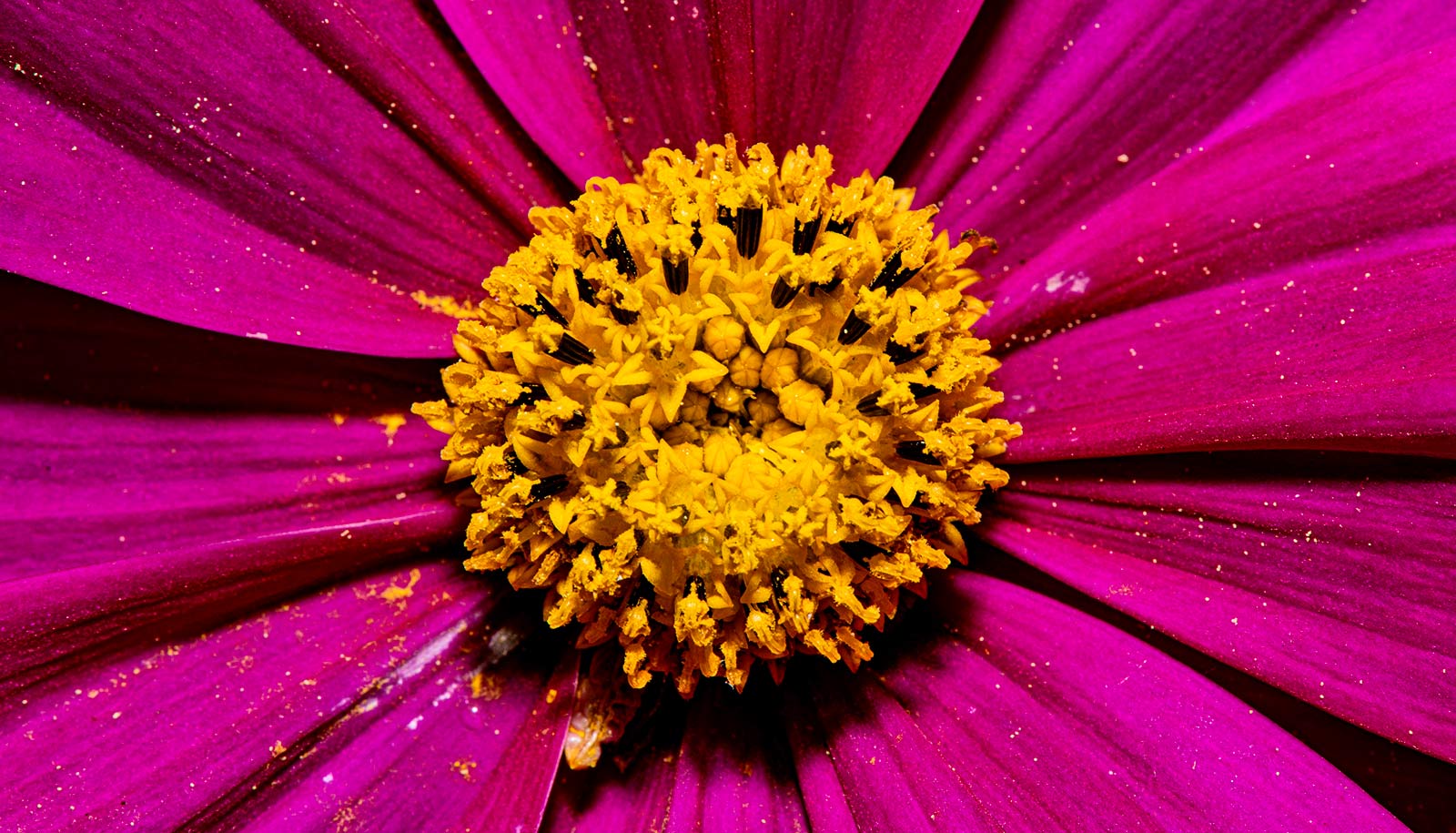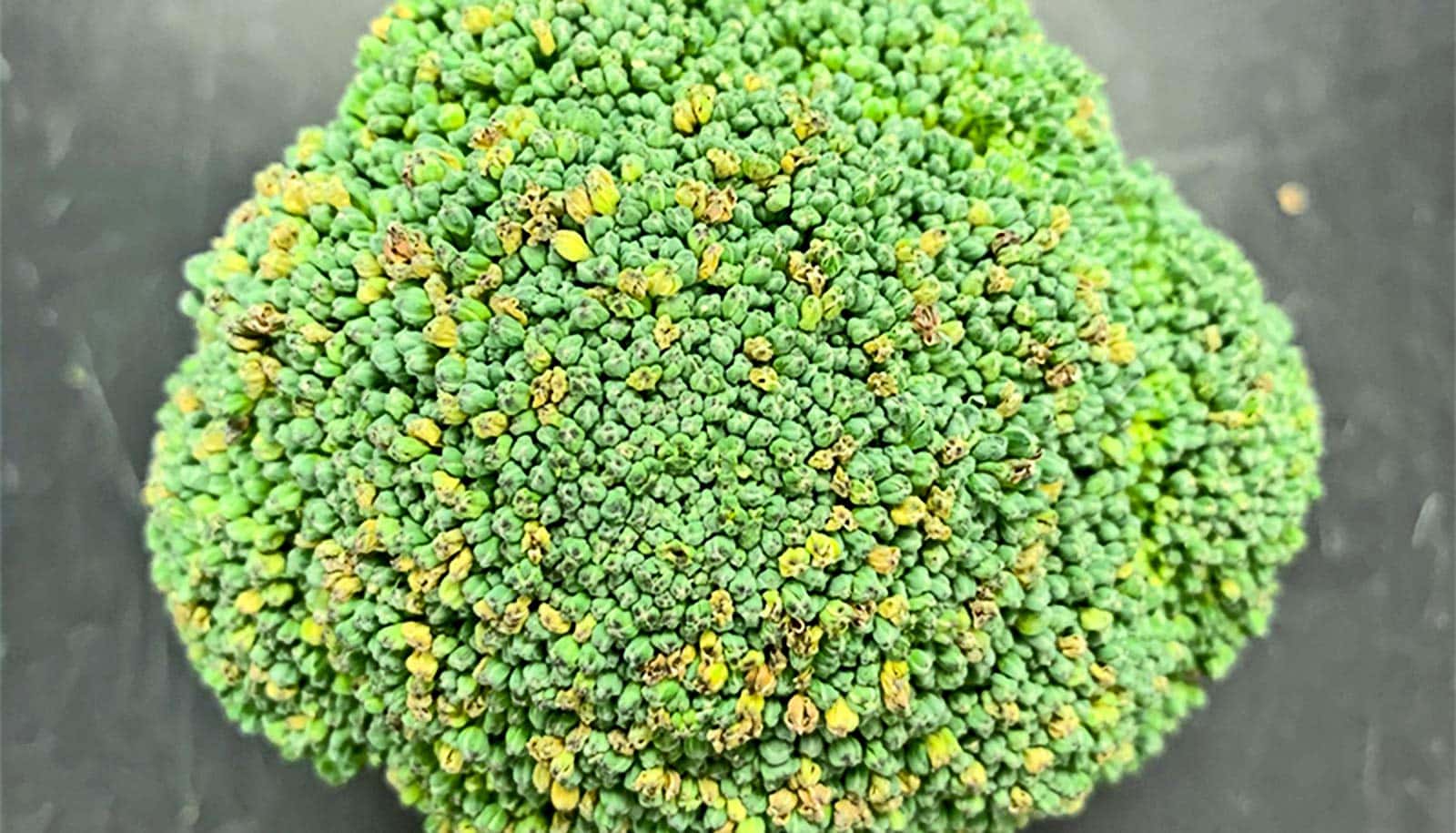
A seedling in the Brassica family. (Credit: Andreas Balzer/Flickr )
‘Family tree’ could improve kale and its relatives
New research challenges prior theories of the origins of canola, Siberian kale, and the rutabaga, and could lead to even healthier, hardier varieties.

New research maps the genetic family tree of three leafy greens: canola, rutabaga, and Siberian kale.
The research challenges prior theories of the origins of the three vegetables.
“Domestication of plants—the process of adapting wild plants for human use—happened a long time ago before we knew about genetics,” says Makenzie Mabry, a doctoral student of biological sciences at the University of Missouri.
“Initially in wild plants there is a big pool of genes, and domestication only uses a few of those genes. Therefore, we often miss out on other possible genes that may be better than the current ones.
“By identifying the ancestors of our domesticated plants, we can take the evolutionary jump and go back in time to determine the genes that weren’t initially selected in domestication—genes that could lead to more healthy or more nutritious plants or plants adapted to different climates—and add those back into our current domesticated plants.”
The scientists analyzed the RNA and DNA in each plant. In addition, they grew one of the plants, and independently verified the origin discovered in the test tubes.
“Using an analogy, some of our human genetic history comes from both our mom and dad, but other parts only come from our mom,” says J. Chris Pires, a professor of biological sciences in the College of Arts and Science and investigator in the Christopher S. Bond Life Sciences Center. “Here we are trying to determine the parents of these plants, and we found that it’s not the previously hypothesized mom nor dad, it’s some yet-to-be-identified species.”
The team aims to continue collecting data throughout the world to broaden their knowledge of this family tree to confidently identify the relatives of the parental species.
“Many people focus solely on the history of animals and people,” says Hong An, a postdoctoral fellow of biological sciences. “But it’s equally, if not more important, to also know the history of our food.”
The study appears in Nature Communications. Funding came from the National Science Foundation and the Fundamental Research Funds for the Central Universities. The content is solely the responsibility of the authors and does not necessarily represent the official views of the funding agencies.
Coauthors of the study are from the University of Arizona; Cornell University; the University of Central Florida; North Carolina State University; the University of Missouri; the University of Warwick; and Agricultural University in Wuhan, China.
Source: University of Missouri
The post ‘Family tree’ could improve kale and its relatives appeared first on Futurity.
Share this article:
This article uses material from the Futurity article, and is licenced under a CC BY-SA 4.0 International License. Images, videos and audio are available under their respective licenses.
Related Articles:
Gene makes plants produce less pollen
June 10, 2020 • futurityGenes may hold clues to keep broccoli fresh
Nov. 18, 2021 • futurityLinks/images:
- https://doi.org/10.1038/s41467-019-10757-1
- https://nbsubscribe.missouri.edu/news-releases/2019/0708-tracing-the-roots-mapping-a-vegetable-family-tree-for-better-food/?utm_campaign=317812_07-08-19%20Rutabaga%20genetic%20tree&utm_medium=email&utm_source=email&dm_i=42N5,6T84,2H9PN8,PQCK,1
- https://www.futurity.org/kale-brassica-family-tree-genes-2100912-2/
- https://www.futurity.org


